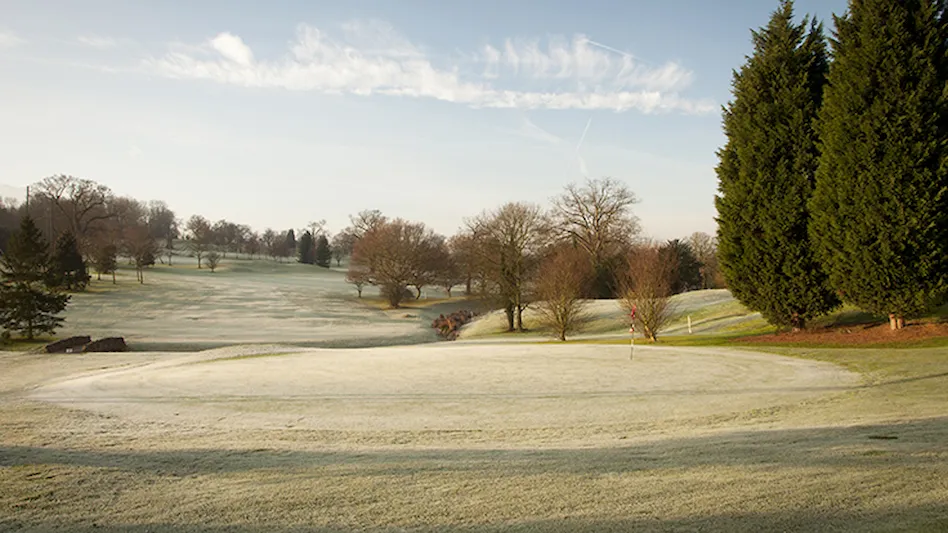
It is inevitable as fall arrives there will be frost and with frost comes the dreaded frost delay.
We are all aware of the science associated with frost on turf. The turf grass plant is mostly water and frost is simply frozen dew that has crystalized on the leaf blade of the turf. While the turf is in this state any traffic will likely crush the frozen cell wall and cause damage to the plant. We have all seen the dark footprints appear after someone ignored the “Frost Warning/Green Closed” signs. It is also common sense that greens because of their value and their tendency to hold frost (before other turf with higher heights of cut) that they are often the center of a frost management program.
I managed cool season greens in the transition zone for 30 years and every ffall we had to retrain everyone about the subtle nuances of managing frost delays. Here are a few strategies to help you transition gracefully into your fall role as protector of the turf and the official unpopular starter on frost days.
• Communicate the reasons for and procedures connected to your Frost Management Program consistently throughout the operation. Use a variety of methods but make sure the verbiage and message is consistent. This includes everything from signage, e-mail blasts, tee sheet notes, web sites and any social media such as Twitter, Facebook etc.… FYI, this should start about two weeks before the average first frost date in your area.
• There can be only one. The most senior person on duty from the golf course maintenance staff should be the sole authority on when the frost delay is over. This will eliminate confusion about just what is the temperature and how can frost still be there when the wind is blowing thirty miles an hour. One expert, his call and no exceptions. FYI, never commit to a start time unless you want to bet your job on it.
• Use a combination of rerouting (avoiding greens that are shaded and thus will be the last greens that the frost will clear) and temporary greens (be sure these are located away from the frost covered green) to accommodate the golfers as soon as possible. On days where heavy frost is forecasted plan a late morning shotgun start.
• Staff accordingly to move quickly through the golf course set up procedures as golfers will expect the instant the frost lifts they can begin play. The reality is that you must be sure the danger of frost damage has passed before you can begin the course set up for the day. We have all seen a light frost lift only to resettle as the sun crests the horizon.
Managing frost delays is one of the most critical things a superintendent does in the Fall. Make sure the golfer sees and understands that you want him to play as much (or more) as he wants to play and you are simply protecting the course and its green assets and you need their cooperation.
Latest from Golf Course Industry
- Gamble Sands to open Scarecrow in 2025
- Toro preps for irrigation, lightning leadership transition
- Triple the trying times
- Honda introduces new battery-powered mowers
- USGA awards IDEA grants to local programs
- MGI Golf launches short-term electric caddy fleet program
- Audubon International adds board members
- WEBINAR: Protect those roots





